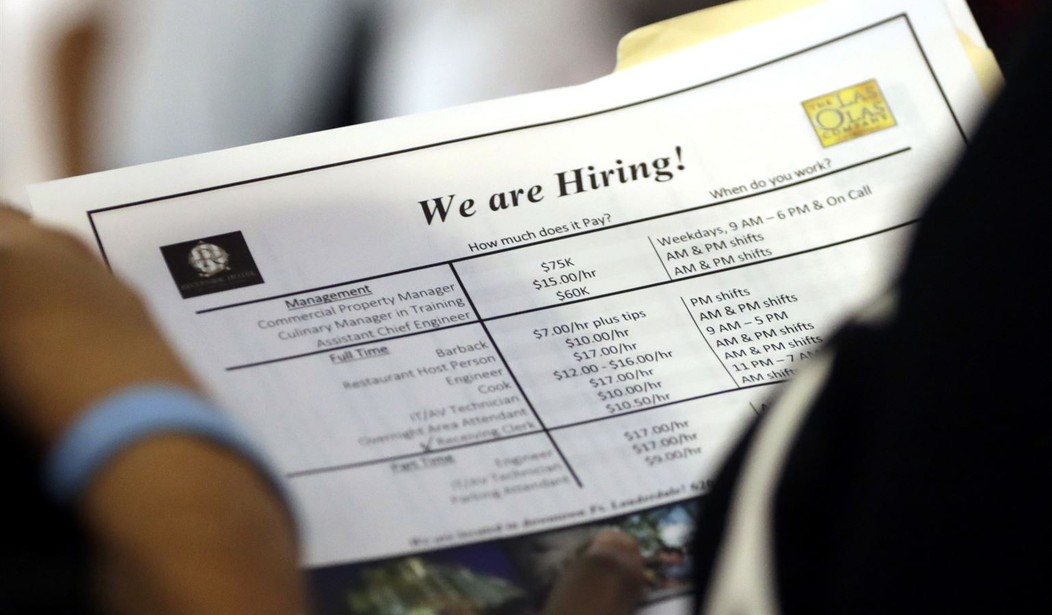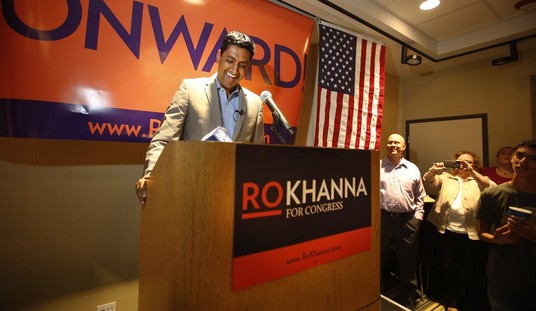Last week, the question was “sugar high” versus real economic growth. This week, the results of the Department of Labor’s initial weekly jobless claims report makes the question more about where the money’s going. Today’s report might just validate Jazz’ analysis earlier this morning, written before the data got released.
The top-line numbers look good, of course. The momentum in declining claims continued more incrementally than last week, falling 39,000 to a new pandemic low of 547,000 — still high under normal circumstances but a vast improvement over the past year:
In the week ending April 17, the advance figure for seasonally adjusted initial claims was 547,000, a decrease of 39,000 from the previous week’s revised level. This is the lowest level for initial claims since March 14, 2020 when it was 256,000. The previous week’s level was revised up by 10,000 from 576,000 to 586,000. The 4-week moving average was 651,000, a decrease of 27,750 from the previous week’s revised average. This is the lowest level for this average since March 14, 2020 when it was 225,500. The previous week’s average was revised down by 4,250 from 683,000 to 678,750.
The advance seasonally adjusted insured unemployment rate was 2.6 percent for the week ending April 10, a decrease of 0.1 percentage point from the previous week’s unrevised rate. The advance number for seasonally adjusted insured unemployment during the week ending April 10 was 3,674,000, a decrease of 34,000 from the previous week’s revised level. This is the lowest level for insured unemployment since March 21, 2020 when it was 3,094,000. The previous week’s level was revised down by 23,000 from 3,731,000 to 3,708,000. The 4-week moving average was 3,713,000, a decrease of 41,750 from the previous week’s revised average. This is the lowest level for this average since March 28, 2020 when it was 3,611,750. The previous week’s average was revised down by 8,250 from 3,763,000 to 3,754,750.
Oddly enough, Reuters reports that even these numbers might be inflated due to fraud. While that’s always a concern, especially with novel programs rolled out in emergencies, precious little concern has been shown by the media about that possibility until now:
It was the second straight week that claims were below the 700,000 level since March 2020 when mandatory shutdowns of nonessential businesses like restaurants and bars were enforced to slow the first wave of COVID-19 infections.
Claims have remained high because of fraud, especially in California and Ohio. The enhancement of the unemployment benefits programs, including a weekly $300 subsidy, could also be encouraging some people to attempt to file a claim for assistance, though not every application is approved.
Latest Labor Department data on first payments show only a fraction of claims were successful over the past months.
Had anyone suggested that in, say, October, the media would have savaged them for a lack of compassion.
Anyway, the problem might be less about fraud and more about incentives. Congress authorized extensions for the pandemic relief programs in mid-March, and that has had an interesting effect. Even while weekly jobless claims have declined, enrollment in those programs jumped — by well over half-million people in a week:

The change week-on-week for these two programs was an addition of almost 713,000 enrollees receiving pandemic benefits. That addition looks very strange at the same time that initial claims have dropped by so much, as well as in other UI categories, which dropped by over 200K in the same period.
It appears that we are extending these programs at the expense of real hiring, and setting incentives for workers to stay on the sidelines, as Jazz warned. That has been the risk all along with these additional benefits programs. Even if we can get businesses to reopen, especially in retail, we’re literally paying people more to stay home than they would make while working. Some will argue that this means employers have to raise their wages, but that would either eliminate jobs, force them to raise prices, or both. Either way, it’s an entirely regressive outcome, especially while larger companies can absorb those extra costs better and drive smaller competitors out of business.
This Congress won’t take another look at ending these programs and going back to normal unemployment, while supporting payrolls for smaller businesses for a short period of full reopening. But Congress should.







Join the conversation as a VIP Member